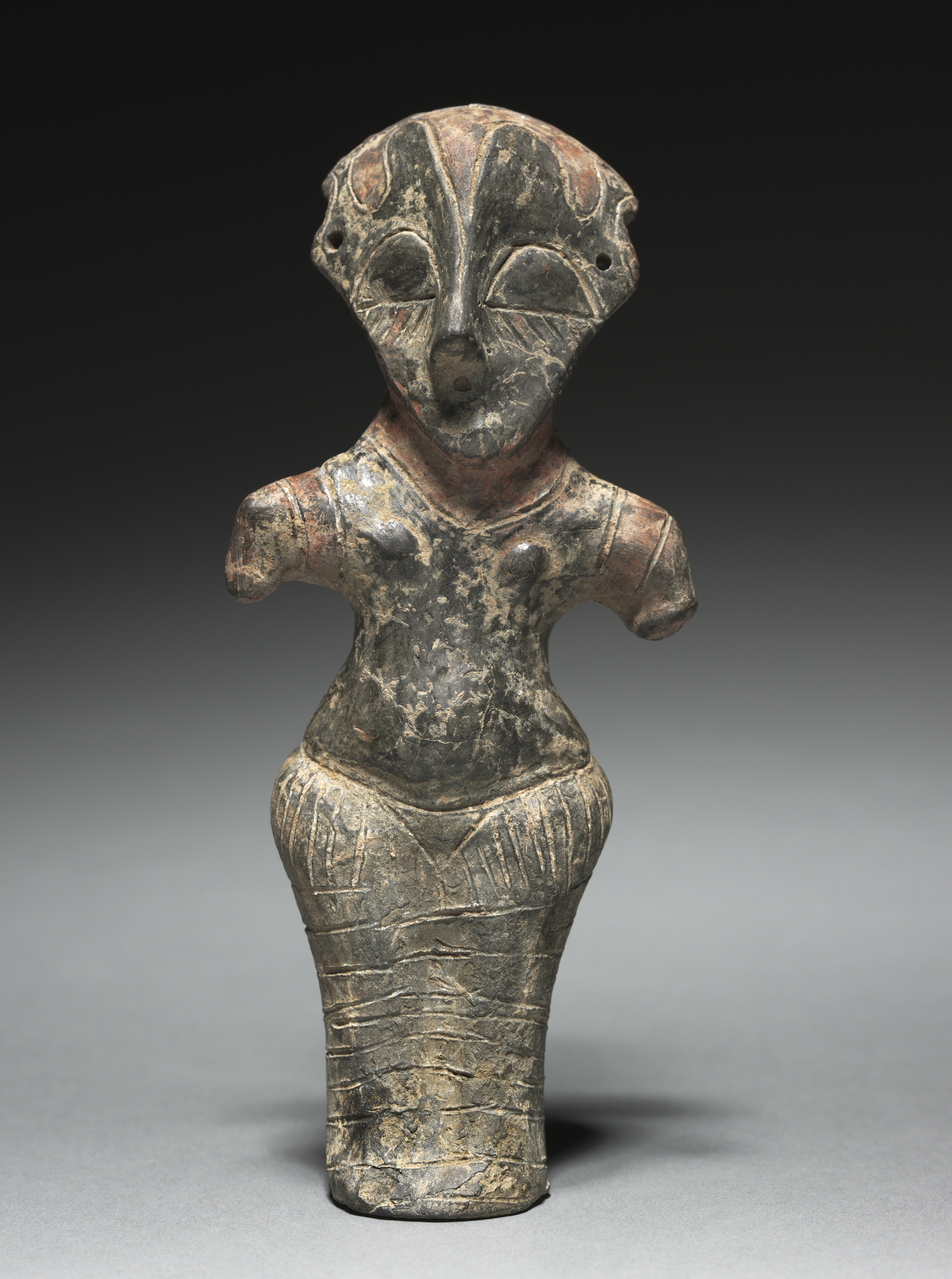The Cleveland Museum of Art
Collection Online as of April 24, 2024

Vinca Idol
4500–3500 BCE
Overall: 16.1 cm (6 5/16 in.)
Gift of Bruce Ferrini 2000.201
Location: 106A Migration Period & Coptic
Did You Know?
If you look closely, you can see remnants of red pigment on this diminutive figure.Description
This statuette, probably a cult idol, dates to the Neolithic Era which saw the development of farming and human technology. It is extraordinarily well preserved and derives from the settlement at Vinca in modern Serbia. This flourishing culture was the largest known in Europe at that time, extending along the Danube into the Balkans and Central Europe. Thousands of clay statuettes have been discovered in the region's Vinca settlements suggestive of the intense magic-religious practices within the Vinca culture. This statuette is anthropomorphic, or human-shaped, and is presumed to have been used for ritual purposes. The use of red paint is typical of Vinca Neolithic figurines, and few have survived in such excellent condition.- {{cite web|title=Vinca Idol|url=false|author=|year=4500–3500 BCE|access-date=24 April 2024|publisher=Cleveland Museum of Art}}
Source URL:
https://www.clevelandart.org/art/2000.201